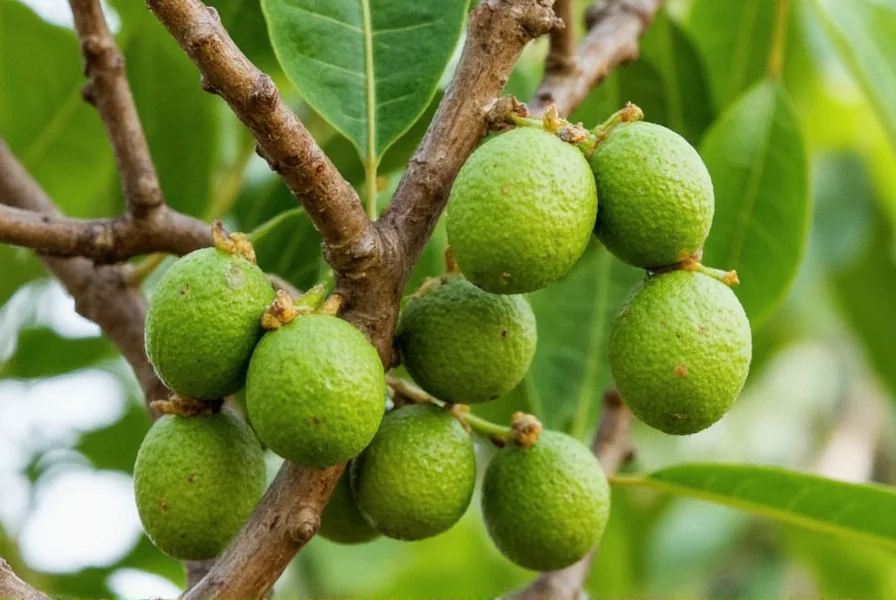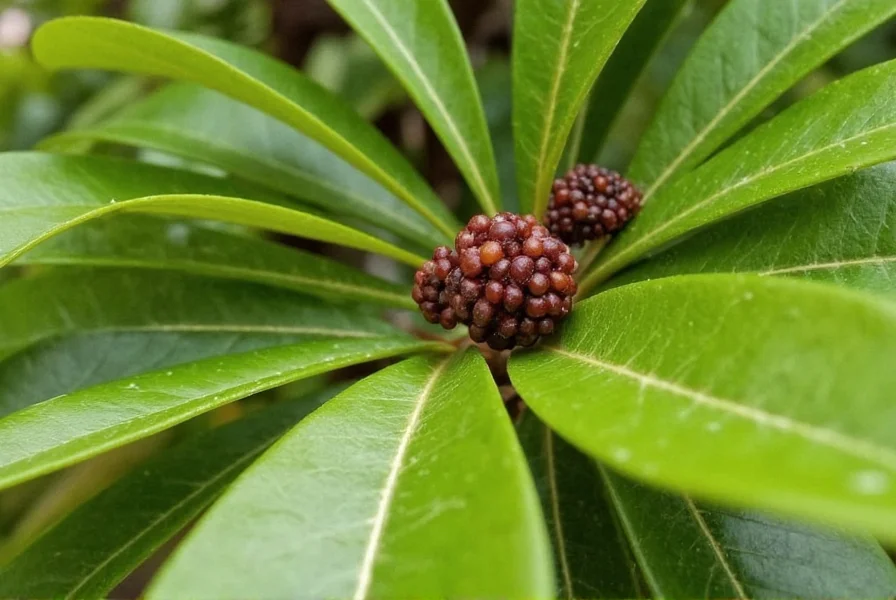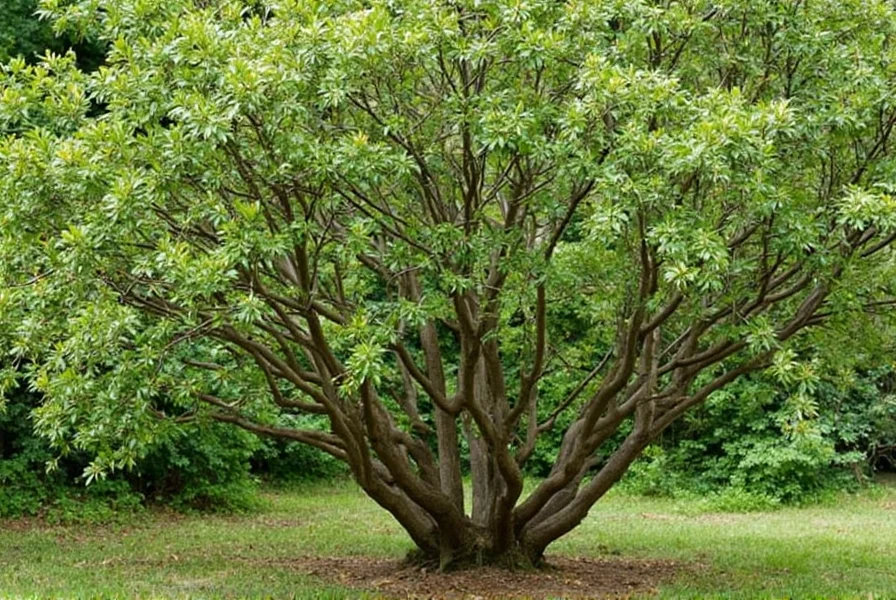Understanding the Allspice Tree: Nature's Single-Spice Wonder
The allspice tree, scientifically known as Pimenta dioica, has fascinated botanists and culinary experts for centuries. This medium-sized evergreen can reach 30-40 feet in height when mature and features glossy, aromatic leaves that release a spicy fragrance when crushed. The tree produces small white flowers followed by green berries that turn purple-black when ripe. However, for spice production, harvesters pick the berries while still green and unripe.
Botanical Characteristics and Identification
Allspice trees belong to the Myrtaceae family, which includes cloves and eucalyptus. They have simple, opposite leaves with prominent veins and an entire margin. The leaves contain aromatic oils that give off a distinctive scent when bruised. During spring, the trees produce clusters of small white flowers that develop into berry-like fruits. These fruits contain two seeds and measure approximately 5-7mm in diameter.
One common misconception is that allspice is a blend of different spices. In reality, the name comes from the spice's flavor profile that resembles a combination of cinnamon, cloves, and nutmeg, but it originates from a single botanical source. This makes understanding Pimenta dioica tree characteristics essential for proper identification.
| Feature | Description |
|---|---|
| Scientific Name | Pimenta dioica |
| Native Regions | Greater Antilles, southern Mexico, Central America |
| Mature Height | 30-40 feet (9-12 meters) |
| Leaf Characteristics | Glossy, aromatic, opposite arrangement |
| Harvest Timing | Green, unripe berries |
Native Habitat and Global Cultivation
While the allspice tree grows wild in its native regions, Jamaica has become the most famous producer of high-quality allspice, often called "Jamaican pimento." The ideal growing conditions include tropical climates with temperatures between 68-86°F (20-30°C), high humidity, and well-drained soil. The trees cannot tolerate frost, limiting their cultivation to USDA hardiness zones 10-11 in most regions.
Successful allspice tree growing zones typically feature moderate rainfall distributed throughout the year, though the trees can withstand brief dry periods once established. In commercial production, farmers often plant allspice trees in shaded areas beneath taller canopy trees, mimicking their natural forest habitat.

Harvesting and Processing Allspice Berries
The allspice berry harvesting process requires precise timing. Harvesters collect the berries when they're still green but have reached full size, typically in June and July. After picking, the berries undergo sun-drying for 8-14 days, during which they shrink and turn reddish-brown while developing their characteristic aroma.
Proper drying is crucial for quality. Berries dried too quickly lose flavor, while those dried too slowly may mold. High-quality allspice berries should be uniform in color, plump, and emit a strong, sweet-spicy fragrance. This careful processing explains why premium Jamaican allspice tree cultivation produces the most sought-after spice.
Practical Guide to Growing Your Own Allspice Tree
For gardeners in suitable climates, growing an allspice tree can be rewarding. Start with fresh seeds, as they lose viability quickly when dried. Plant seeds in well-draining, slightly acidic soil with plenty of organic matter. Young trees need partial shade and consistent moisture, while mature trees tolerate more sun.
Understanding allspice tree soil requirements is essential for success. The ideal soil pH ranges from 5.5 to 6.5, with excellent drainage being critical. These trees don't tolerate waterlogged conditions. In cooler climates, grow allspice in containers that can be moved indoors during winter months. Container-grown trees typically reach 6-8 feet tall and can produce berries when mature.
Propagation through cuttings is challenging but possible with proper hormone treatment and high humidity conditions. Most home growers find better success with seed propagation, though trees grown from seed may take 5-7 years to produce fruit.
Beyond the Kitchen: Traditional and Medicinal Uses
While most people know allspice for its culinary applications in baking, marinades, and spice blends, traditional medicine has utilized various parts of the Pimenta dioica tree for centuries. Indigenous peoples used the leaves and berries for digestive issues, pain relief, and as an antiseptic.
Modern research suggests potential health benefits from compounds found in allspice, including eugenol (also found in cloves), which has anti-inflammatory properties. However, these should not replace medical treatment, and more research is needed to confirm therapeutic applications.

Common Misconceptions About Allspice
Many people mistakenly believe allspice is a blend of different spices. This confusion likely stems from its complex flavor profile that resembles a combination of cinnamon, cloves, and nutmeg. However, authentic allspice comes exclusively from the Pimenta dioica tree.
Another misconception is that allspice trees produce multiple spices. In reality, the same berry provides the singular spice we call allspice. The leaves, while aromatic, produce a different flavor profile and are used separately in some Caribbean cooking traditions, particularly for wrapping foods during cooking.
Caring for Your Allspice Tree
Proper allspice tree care requirements include regular watering during dry periods, especially for young trees. Established trees need less frequent watering but benefit from deep irrigation during extended droughts. Fertilize with a balanced, slow-release fertilizer formulated for tropical trees during the growing season.
Pruning helps maintain shape and encourages air circulation, reducing disease risk. Remove dead or crossing branches in late winter before new growth begins. Watch for common pests like scale insects and spider mites, which can be managed with horticultural oil if detected early.
Conclusion: The Unique Allspice Tree
The allspice tree represents a remarkable example of nature providing a complex flavor from a single source. Understanding its botanical characteristics, growing requirements, and harvesting process helps appreciate why this spice has remained popular for centuries. Whether you're a gardener attempting to grow your own tree or simply a culinary enthusiast, recognizing the journey from tree to spice enhances your appreciation of this versatile ingredient.
Frequently Asked Questions
Can you grow an allspice tree in a temperate climate?
Allspice trees require tropical conditions and cannot survive freezing temperatures. In temperate climates, grow them in containers that can be moved indoors during winter. They need temperatures above 50°F (10°C) year-round and perform best in USDA zones 10-11. Container-grown trees typically reach 6-8 feet tall and may produce berries when mature.
How long does it take for an allspice tree to produce berries?
Trees grown from seed typically take 5-7 years to produce their first berries. Grafted trees may produce fruit in 3-4 years. The tree must reach sufficient maturity before flowering and fruiting occurs. Optimal growing conditions, including proper sunlight, soil, and water, help accelerate this process.
What's the difference between allspice berries and ground allspice?
Allspice berries are the whole, dried unripe fruit of the Pimenta dioica tree. Ground allspice is made by grinding these whole berries. Whole berries retain their flavor longer (up to 2 years) compared to ground allspice (6-12 months). For the most intense flavor, many chefs prefer grinding whole berries fresh as needed.
Can you eat fresh allspice berries from the tree?
Fresh green allspice berries have a mild flavor compared to dried berries. While technically edible, they lack the characteristic allspice flavor until properly dried. The drying process triggers chemical changes that develop the complex spice profile. Fresh berries contain the same compounds but in different concentrations than dried ones.
Why is Jamaican allspice considered superior?
Jamaican allspice benefits from ideal growing conditions including volcanic soil, specific rainfall patterns, and traditional harvesting methods. These factors contribute to higher concentrations of essential oils, particularly eugenol, which gives allspice its distinctive aroma and flavor. Strict quality controls in Jamaica also ensure proper drying and processing, maintaining superior quality compared to allspice from other regions.











 浙公网安备
33010002000092号
浙公网安备
33010002000092号 浙B2-20120091-4
浙B2-20120091-4